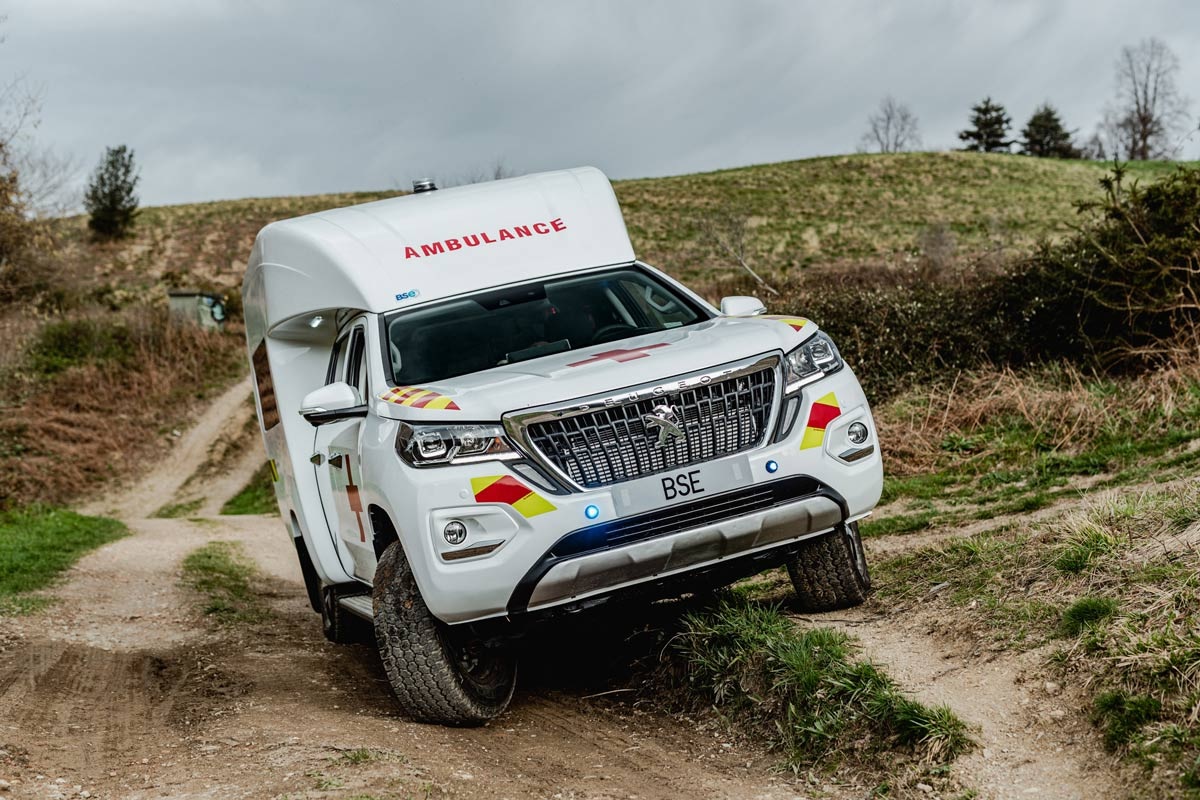In an effort to improve healthcare access in hard-to-reach areas with difficult terrains, the Meghalaya Health Department is using 4×4 all-terrain ambulances. With over 7,000 villages in the state, including more than 1,400 categorized as difficult to access, these specialized vehicles aim to provide crucial services to remote locations.
During a press briefing, health officials acknowledged that the 108 ambulance service currently operates in 45 locations, with plans underway to expand its reach to more regions. Secretary of Health & Family Welfare, Ramkumar S., noted that five 4×4 ambulances have already been deployed, with an additional five on the way, and another 10 being procured to serve remote areas.
Ramkumar S, Secretary of Health & Family Welfare and Mission Director of NHM, explained, “Health Minister Dr. Ampareen Lyngdoh recently visited Ri Bhoi District and provided 4×4 ambulances. The issue with regular ambulances is that they struggle in difficult terrain, especially during the rainy season, which is why we require 4×4 ambulances. These vehicles are not readily available in manufacturing; you need to get a 4×4 vehicle, fabricate it, and modify it. It’s an entirely different process. Five ambulances have already been distributed to healthcare facilities, and another five are being procured.”
When asked about the 4×4 ambulances, Ramkumar added, “Currently, we have five recently purchased 4×4 ambulances, and we’re working on procuring 10 more. These are for remote areas like Ranikor, where we need all-season vehicles.”
With a focus on improving maternal and child healthcare, Meghalaya has also made strides in institutional deliveries. “We have 7,000 villages in Meghalaya, and over 1,400 are hard to reach. Five years ago, institutional delivery rates were at 56%, but today they have increased to over 75%. This has led to a reduction in maternal and infant deaths,” Ramkumar said, adding that mobile stretchers are also being provided in several areas to facilitate safe transport.
“There are three to four varieties of ambulances in Meghalaya. Primary Health Centers (PHCs) have their own ambulances. While not all may be new, they have been purchased at different points in time. During the COVID-19 pandemic, over 30 ambulances were given to various healthcare facilities under the Chief Minister’s Special Development Fund (CMSDF).”
Under the Chief Minister’s Safe Motherhood Scheme, a fleet of dedicated maternity vehicles is available to transport pregnant women and children. These vehicles are managed locally, allowing pregnant women or children in need of medical transport to reach hospitals, diagnostic centers, or return home. “Each facility supports at least two to three vehicles. Across the state, we have about 150 facilities, including PHCs, CHCs, and district hospitals, with over 300 vehicles available under this scheme. Last year alone, 95,000 trips were made by these vehicles—an average of more than 300 trips per day,” Ramkumar noted.
The 108 ambulance service continues to play a critical role in the state, particularly for higher referral cases and road accidents. “The 108 service has trained medical technicians, pilots, and helpers. Currently, 108 is available in 45 locations, but we aim to expand it to cover all blocks,” Ramkumar added.
Health Minister Dr. Ampareen Lyngdoh reiterated the improved status of ambulance services in Meghalaya. “As per the records, the availability of ambulances is much better in Meghalaya. However, in some unavoidable situations, we need to categorize patients and their conditions before deploying these services. The 108 service is functioning quite efficiently, and we have improved our services,” she said.


